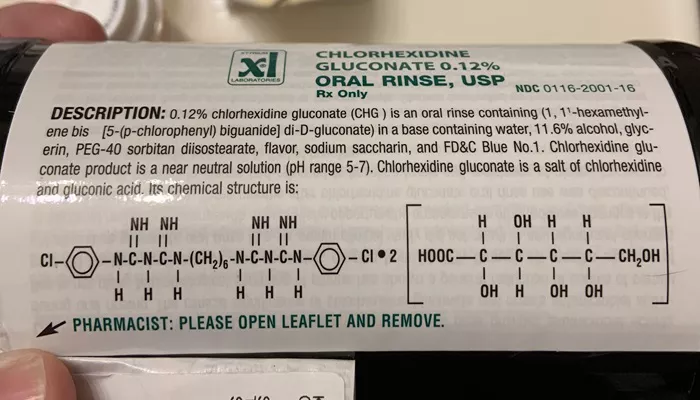Dental implants are a popular and effective solution for replacing missing teeth. After the surgical placement of dental implants, proper care is essential for successful healing and integration with the jawbone. One of the key components of post-operative care is the use of chlorhexidine, an antimicrobial mouthwash that helps prevent infection and promotes healing. This article will discuss when to start using chlorhexidine after dental implant surgery, its benefits, and how to use it effectively.
What Is Dental Implants?
Dental implants are artificial tooth roots made of titanium or other biocompatible materials. They are surgically placed into the jawbone to provide a stable foundation for replacement teeth, such as crowns or dentures. The process involves several stages:
Consultation: Before the surgery, your dentist will evaluate your oral health and take X-rays to determine the best treatment plan.
Surgery: During the procedure, the dentist will place the implant into the jawbone. This is typically done under local anesthesia or sedation.
Healing: After the implant is placed, the healing process begins. This includes osseointegration, where the implant fuses with the jawbone.
Placement of Abutment: Once healing is complete, an abutment is attached to the implant. This serves as a connector for the final restoration.
Final Restoration: Finally, a crown or denture is placed on the abutment, completing the restoration.
see also: The 5 Best Dental Implant Brand
The Importance of Post-Operative Care
Proper post-operative care is crucial for the success of dental implants. After surgery, the mouth is vulnerable to infection, and maintaining good oral hygiene is essential. This is where chlorhexidine mouthwash comes into play.
Chlorhexidine is an antiseptic that is effective against a wide range of bacteria. It helps reduce the bacterial load in the mouth, minimizing the risk of infection and promoting healing. Using chlorhexidine after dental implant surgery can significantly improve the outcome of the procedure.
When to Start Using Chlorhexidine
The timing for starting chlorhexidine after dental implant surgery is important for maximizing its effectiveness. Here are the general guidelines:
1. Initial 24 Hours Post-Surgery
Avoid Rinsing: During the first 24 hours after surgery, patients should avoid rinsing their mouths. This is crucial because rinsing can dislodge the blood clot that forms at the surgical site, which is essential for healing.
Focus on Rest: Use this time to rest and allow the initial healing process to begin. Follow any specific instructions provided by your dentist regarding pain management and dietary restrictions.
2. Starting Chlorhexidine Rinse
When to Begin: After the first 24 hours, you can start using chlorhexidine mouthwash. Most dentists recommend beginning the rinse on the second day post-surgery.
Concentration and Dosage: The typical concentration of chlorhexidine used in dental settings is 0.12% or 0.2%. You should use the mouthwash as directed by your dentist, usually swishing 15 mL in your mouth for 30 to 60 seconds.
Frequency of Use: Generally, chlorhexidine should be used twice a day, ideally in the morning and evening, after brushing your teeth.
3. Duration of Use
Typical Duration: Chlorhexidine is usually recommended for use for about 7 to 10 days following dental implant surgery.
This duration may vary based on your dentist’s recommendations and your healing progress.
Monitor Healing: During this period, your dentist may schedule follow-up appointments to monitor your healing and determine if additional treatment is necessary.
Benefits of Using Chlorhexidine
Using chlorhexidine after dental implant surgery offers several benefits:
Reduces Bacterial Load: Chlorhexidine is effective in reducing the number of bacteria in the mouth, which helps prevent infection at the surgical site.
Promotes Healing: By minimizing the risk of infection, chlorhexidine supports the healing process and encourages the successful integration of the implant with the jawbone.
Decreases Inflammation: Chlorhexidine can help reduce gum inflammation, which is essential for maintaining healthy tissues around the implant.
Easy to Use: Chlorhexidine mouthwash is easy to incorporate into your oral hygiene routine. It can be used alongside regular brushing and flossing.
How to Use Chlorhexidine Effectively
To maximize the benefits of chlorhexidine, follow these guidelines:
Follow Instructions: Always follow your dentist’s instructions regarding the use of chlorhexidine. This includes the concentration, dosage, and duration of use.
Timing: Use chlorhexidine after brushing your teeth. This ensures that the mouth is clean and allows the mouthwash to work effectively.
Avoid Eating or Drinking: After rinsing with chlorhexidine, avoid eating or drinking for at least 30 minutes. This allows the medication to remain in contact with the tissues and enhances its effectiveness.
Do Not Dilute: Do not dilute chlorhexidine with water or other liquids. Use it at the recommended concentration for optimal results.
Be Aware of Side Effects: Some individuals may experience side effects, such as a temporary alteration in taste, staining of teeth, or increased tartar buildup. If you notice any concerning side effects, contact your dentist.
Signs of Complications
While chlorhexidine is effective in promoting healing, it is essential to monitor your recovery for any signs of complications. Contact your dentist if you experience:
Severe Pain: While some discomfort is normal, severe or worsening pain may indicate a problem.
Persistent Bleeding: If bleeding continues beyond a few hours or is excessive, seek dental care.
Swelling or Redness: Increased swelling, redness, or warmth around the implant site may signal an infection.
Foul Taste or Odor: A bad taste or odor in your mouth could indicate an infection or other complications.
Loose Implant: If you notice that the implant feels loose or unstable, contact your dentist immediately.
Conclusion
Using chlorhexidine mouthwash after dental implant surgery is an important step in promoting healing and preventing infection. Starting chlorhexidine rinses after the first 24 hours post-surgery can significantly enhance the healing process and support the successful integration of the implant. By following your dentist’s instructions and maintaining good oral hygiene, you can help ensure a smooth recovery and enjoy the long-term benefits of your dental implants.

